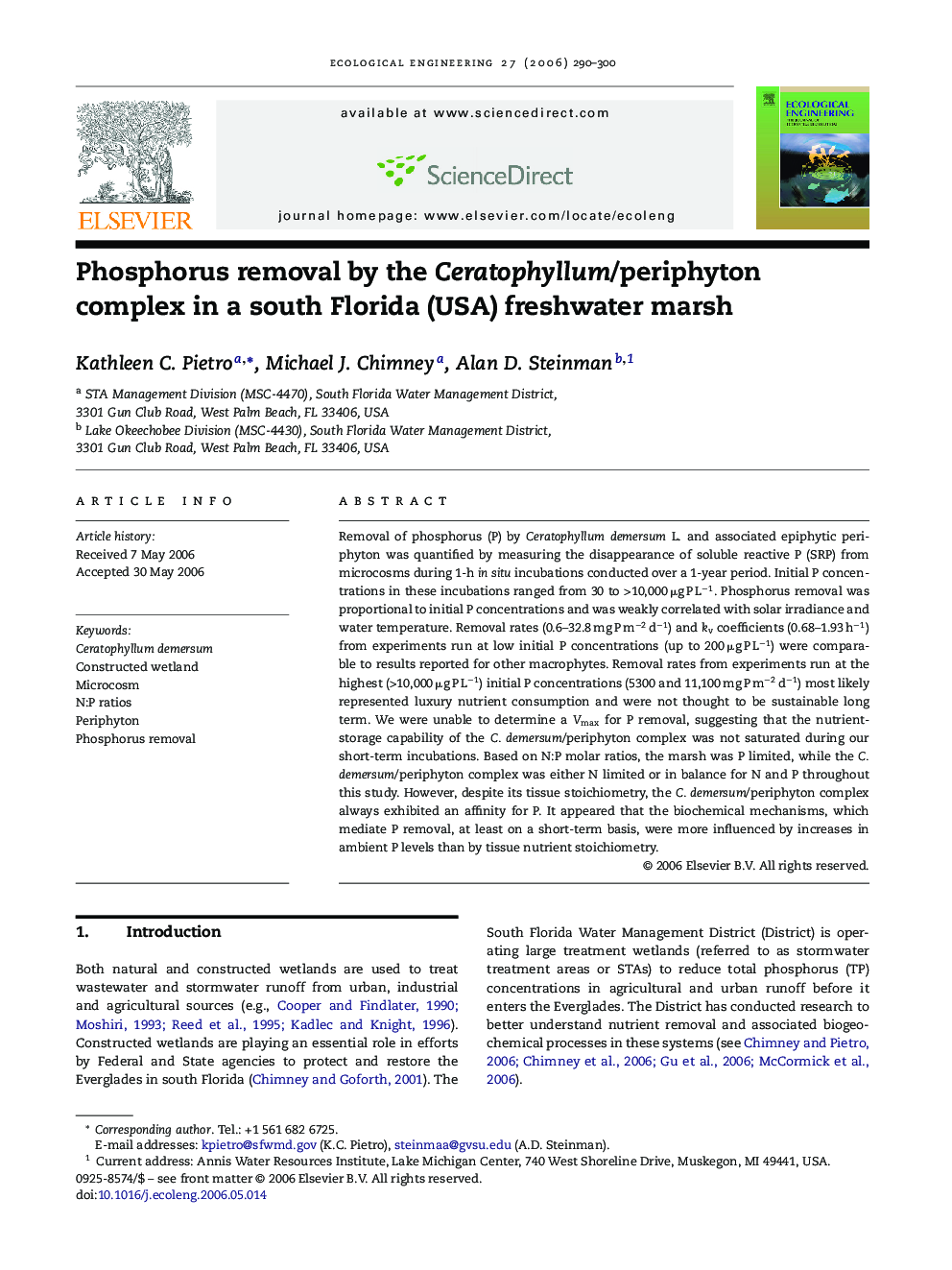| Article ID | Journal | Published Year | Pages | File Type |
|---|---|---|---|---|
| 4391234 | Ecological Engineering | 2006 | 11 Pages |
Abstract
Removal of phosphorus (P) by Ceratophyllum demersum L. and associated epiphytic periphyton was quantified by measuring the disappearance of soluble reactive P (SRP) from microcosms during 1-h in situ incubations conducted over a 1-year period. Initial P concentrations in these incubations ranged from 30 to >10,000 μg P Lâ1. Phosphorus removal was proportional to initial P concentrations and was weakly correlated with solar irradiance and water temperature. Removal rates (0.6-32.8 mg P mâ2 dâ1) and kv coefficients (0.68-1.93 hâ1) from experiments run at low initial P concentrations (up to 200 μg P Lâ1) were comparable to results reported for other macrophytes. Removal rates from experiments run at the highest (>10,000 μg P Lâ1) initial P concentrations (5300 and 11,100 mg P mâ2 dâ1) most likely represented luxury nutrient consumption and were not thought to be sustainable long term. We were unable to determine a Vmax for P removal, suggesting that the nutrient-storage capability of the C. demersum/periphyton complex was not saturated during our short-term incubations. Based on N:P molar ratios, the marsh was P limited, while the C. demersum/periphyton complex was either N limited or in balance for N and P throughout this study. However, despite its tissue stoichiometry, the C. demersum/periphyton complex always exhibited an affinity for P. It appeared that the biochemical mechanisms, which mediate P removal, at least on a short-term basis, were more influenced by increases in ambient P levels than by tissue nutrient stoichiometry.
Related Topics
Life Sciences
Agricultural and Biological Sciences
Ecology, Evolution, Behavior and Systematics
Authors
Kathleen C. Pietro, Michael J. Chimney, Alan D. Steinman,
